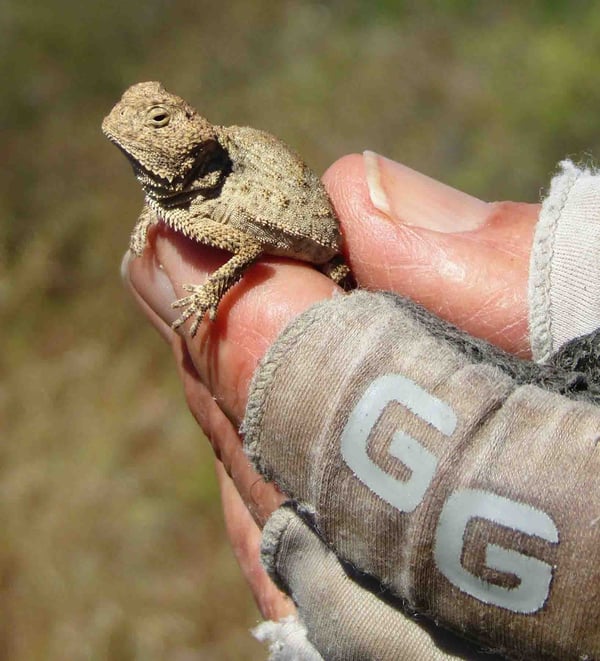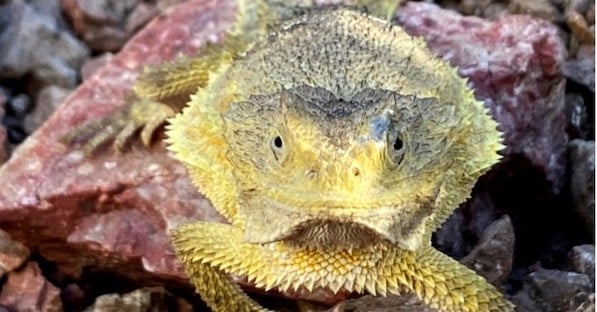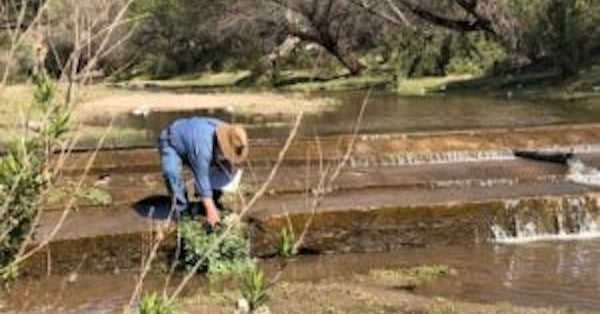Inside the Expedition: Discovering the Rock Horned Lizard
At Greater Good Charities, we’re committed to protecting the planet’s most vulnerable ecosystems and species. That's why we bring together scientists, students, and conservationists to study and protect the unique biodiversity of the Madrean Archipelago—a network of Sky Island mountain ranges stretching from New Mexico and Arizona into northern Mexico.
Thanks to the support of our donors and partners, these expeditions help us uncover and better understand the species that call this region home, including the elusive Rock Horned Lizard (Phrynosoma ditmarsi) .
What is a Rock Horned Lizard?
The name ‘Rock Horned Lizard’ came from the lizard’s interesting looks, with its flat back and horns on the back of its head. This species is also sometimes referred to as the Ditmars' horned lizard after a herpetologist at the New York Zoological Society, Raymond L. Ditmars. The Rock Horned Lizard is part of the genus Phrynosoma (meaning toad body in Greek) alongside a group of New World Lizards with flat bodies. With its massive head and broad blade-like horns, is one of the most bizarre in this genus.
Rock Horned Lizard at Rancho La Palma
Photo © Erik K. Enderson
American herpetologist, a person who studies amphibians and reptiles, Leonard Stejneger originally discovered the Rock Horned Lizard in 1898. However, the most intriguing aspect of the Rock Horned Lizard is that while it was initially discovered in 1898, it wasn’t rediscovered for another 73 years. As of 1997, there were 136 recorded species of lizards in the United States listed in Hobart Smith's Handbook of Lizards.
Three of these species are not well documented, including the Rock Horned Lizard (Sonoran Herpetologist). Since 2009, the Madrean Archipelago Biodiversity Assessment (MABA) program at Sky Island Alliance and the MDE at Greater Good Charities have documented the Rock Horned Lizards in about ten areas in Sonora.
Most of the records of the Rock Horned Lizard in Sonora are single individuals from widely separated localities. Incredibly, Josè Abel, who began an MDE scholarship in 2019 as a high school student, photographed 11 individuals on Rancho Las Playitas in 2019.

Juvenile Rock Horned Lizard
Photo © Erik K. Enderson
Because of Josè Abel’s incredible work, we were able to hold an MDE Mini-Expedition in Las Playitas with a mission to learn more about the life history of this rare lizard. For nine days, a team of volunteer herpetologists studied the Rock Horned Lizard in its natural habitat.
What Our Team Did
José Abel guided the herpetologists to the best areas to look for horned lizards. Each specimen was measured and photographed. The herpetologists marked the capture sites and described the circumstances of each find. The lizards were taken back to base camp, fitted with tiny radio transmitters, and then returned to the exact spot they were found. Then the herpetologists followed the lizards for the next few days to watch how they live.
A few lizards were held for a few hours in temporary enclosures to observe what they prefer to eat. Some species like the Regal Horned Lizard (P. solare), which also lives on Rancho Las Playitas, eat ants. With its massive head and deep jaw, the Rock Horned Lizard probably eats other kinds of insects such as grasshoppers and beetles.
The Rock Horned Lizard is just one example of the extraordinary biodiversity found in the Sky Islands region—and why documenting and protecting these habitats is so vital. Every expedition brings new discoveries and deeper understanding of the interconnected life within this fragile ecosystem.
Your donations allow us to explore biodiversity hotspots and learn more about the wildlife that call these critical ecosystems home. Together, we can ensure that the Sky Islands and the rare creatures that inhabit them continue to thrive.


